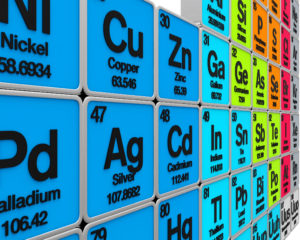
The periodic table is one of the most pivotal and enduring tools of modern science. It’s seen from the inside covers of elementary science textbooks to the walls of chemistry labs all around the world. To honor the 150th anniversary of its discovery, the United Nations General Assembly and UNESCO have declared 2019 to be the International Year of the Periodic Table of Chemical Elements.
As with all scientific progress, Dmitri Mendeleev’s periodic table was the result of decades—centuries, even—of research performed by scientists all over the world. Aristotle first theorized the existence of basic building blocks of matter over 2,500 years ago, which later were believed to be earth, air, fire and water. Alchemist Hennig Brand is credited with discovering phosphorus in the late 17th century, sparking chemists to begin pursuing these basic atomic elements.
Continue reading “2019: International Year of the Periodic Table” Another Independence Day is in the books, and for many of us in the U.S. it included spending time with friends, family, food and the traditional holiday fireworks. Around the world, fireworks add to the enjoyment of many annual celebrations and events. Their colorful visual and audio display has the ability to thrill us, no matter what age we are. Despite growing older I never seem to tire of fireworks; I’ve also noticed that with each passing year the show seems to get more sophisticated. Whether it be a new color or shape or design of firework, pyrotechnic technology seems to improve at an impressive rate.
Another Independence Day is in the books, and for many of us in the U.S. it included spending time with friends, family, food and the traditional holiday fireworks. Around the world, fireworks add to the enjoyment of many annual celebrations and events. Their colorful visual and audio display has the ability to thrill us, no matter what age we are. Despite growing older I never seem to tire of fireworks; I’ve also noticed that with each passing year the show seems to get more sophisticated. Whether it be a new color or shape or design of firework, pyrotechnic technology seems to improve at an impressive rate.